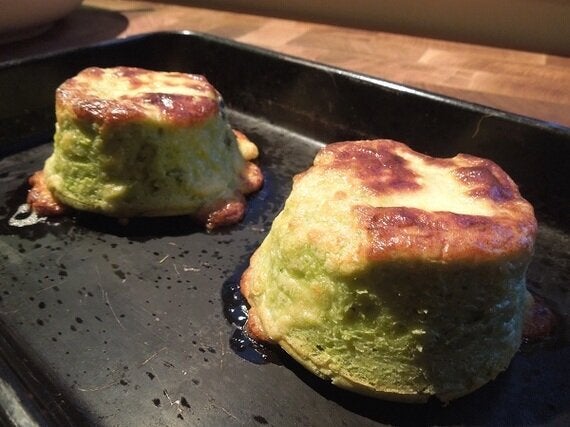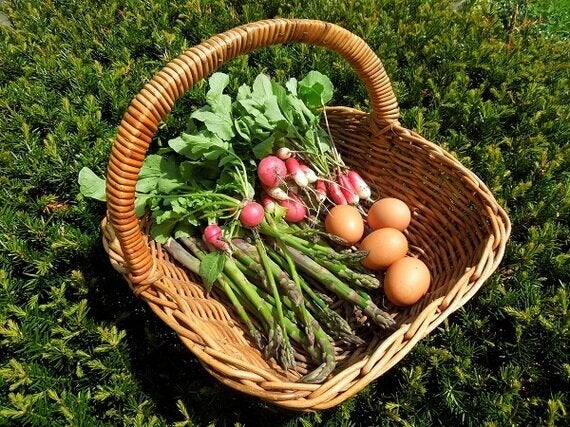
We're almost at the end of the English asparagus season - it's traditional to stop cutting the spears by Midsummer's Day - and I was looking for a way to extend it a little by making something I could put in the freezer.
In spite of repeated claims online that the Romans used to freeze asparagus in the snows of the Alps, I can find no record of this (and I've read Apicius, oh yes). In my experience frozen asparagus is vile, so the best way to freeze it is as part of an already cooked dish.
I had already made asparagus soup but then I saw a recipe in Delicious magazine for asparagus and gruyère soufflés. Obviously normal soufflés don't freeze, but twice-baked ones do, provided you stop short of the final cooking. I pinched the asparagus part from Delicious and re-worked a James Martin recipe for goat's cheese soufflés.
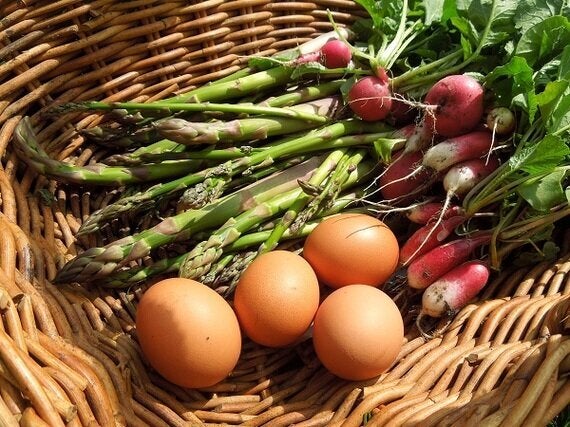
It worked a treat. Whether you freeze them or not, the joy of these soufflés is that most of the prep is done in advance, very handy if you want to enjoy the company of your guests rather than sweating over a hot stove. They make a good starter or light lunch or supper, served with a sharp, crunchy, lightly mustardy salad.
And they're very forgiving. The first time I made them I forgot to add the asparagus tips and committed the unforgivable soufflé sin of opening the oven door, taking them out and poking in the tips and they still rose beautifully. I don't recommend this however. Much better to follow the recipe.
Twice-baked Asparagus and Goat's Cheese Soufflés (makes 6-8)
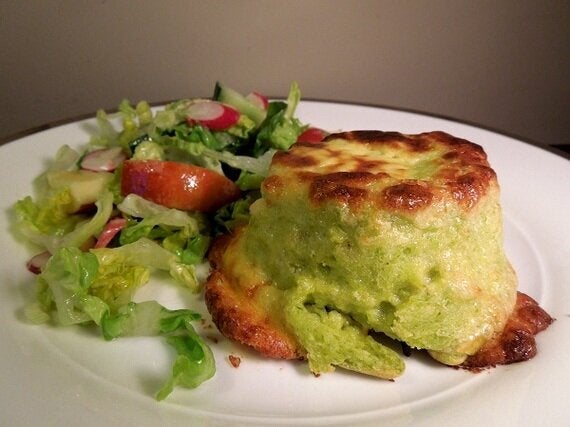
Ingredients:
300g trimmed asparagus (about 500g before trimming)
100g butter
100g plain flour
300 ml whole milk, warmed
2-3 tbsp finely grated parmesan, to taste
4 large eggs, separated, plus 1 egg white (save the extra yolk for the glaze, below)
150 ml soft rindless goat's cheese, crumbled
Salt and pepper
For the glaze:
50 ml double cream
25g grated parmesan
1 egg yolk
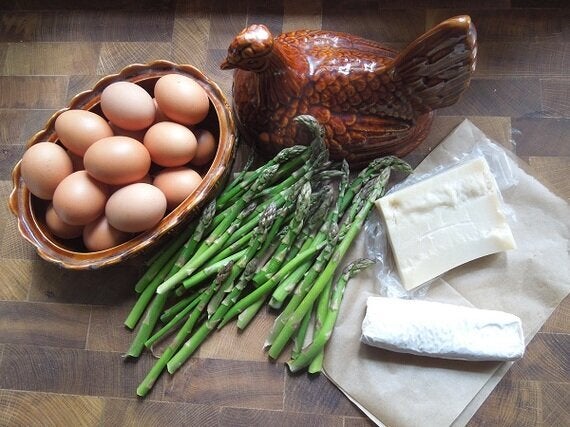
Method:
Preheat the oven to 200C/400F/Gas Mark 6.
Prep the asparagus by snapping off the woody ends and discarding them. Cut the asparagus into small chunks, reserving the tips. Steam the stems for about eight minutes or until tender, then run cold water over them to arrest cooking, drain and lay on kitchen paper to dry and cool.
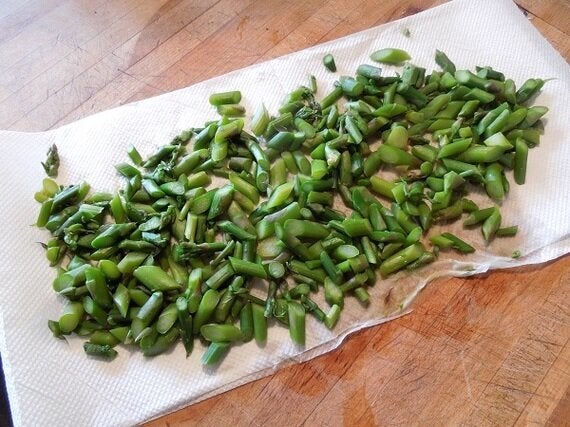
Steam the tips for about three minutes until just tender, then cool and drain in the same way and put to one side. Place the asparagus stems in a food processor and blend to a smooth purée. You may need to sieve it afterwards to get it really smooth. It really only takes five minutes and a bit of elbow grease. Set the purée aside.
Melt the butter in a pan on the stove and use some of it to liberally (and I mean liberally) butter six 200 ml ramekins. You might want to do a couple extra, as this is a fairly generous recipe and your ramekins might be smaller.
Stir the flour into the remaining butter and cook for a few minutes on a low heat. Gradually whisk in the milk and cook gently until you have a smooth, creamy sauce. It should be thick enough for the spoon to almost stand up in it and for the sauce to be coming away from the sides of the pan, because the asparagus purée will loosen it again. Stir in the parmesan and set aside to cool a little. Beat in four egg yolks, one at a time, then stir in the purée.

Fold through the goat's cheese. Season with salt and pepper and transfer to a large bowl.
In another, scrupulously clean bowl, beat the eggs whites until they're just stiff enough to hold peaks. Stir a tablespoon of the egg whites into the cheese sauce and mix well. Using a metal spoon, gently fold in the remaining egg whites, one third at a time, using cutting and folding movements so you don't lose the air.
Spoon the mixture into the ramekins, pushing the asparagus spears under the surface, and sit the pots in a roasting tin. Pour boiling water into the tin to reach halfway up the sides of the dishes.

Bake for 20-25 minutes until they're risen and coloured. Remove from the oven and the water bath. Once cold, you can freeze them for up to a month at this point, still in their pots (or turn them out, allow them to cool and freeze in one layer before boxing up).
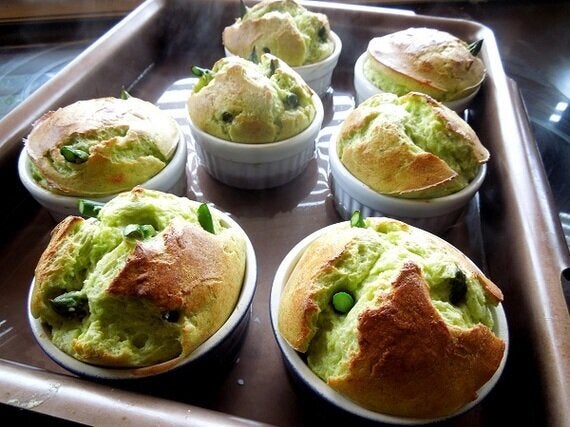
Otherwise, after they've had 10 minutes to cool a bit, run a knife around the edges and turn them out, upside down, onto a baking tray. They will sink back as they cool but puff up again when reheated. They can be refrigerated, covered, until you need them (overnight is fine).
Whisk up the glaze ingredients, cover, and put in the fridge until needed, otherwise the yolk will dry out and develop a skin.
Fifteen minutes before you want to eat, take the soufflés out of the fridge and preheat the oven to 200c/400F/Gas Mark 6. Drizzle the glaze over the tops. Bake for 10 minutes then flash under the grill until golden on top.
